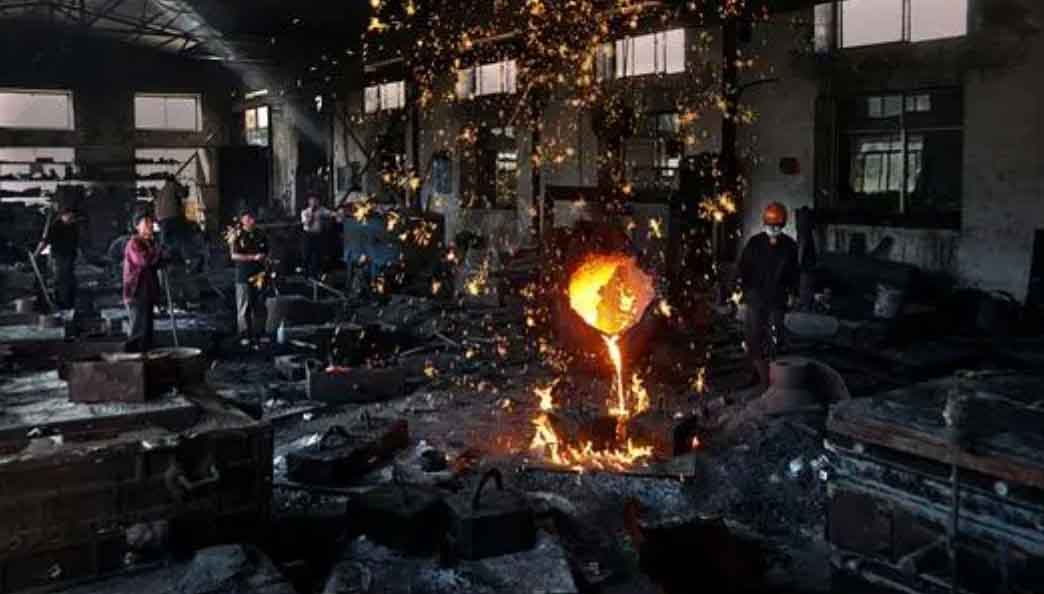The 2015 Forum on Civil-Military Integration marked a pivotal shift in China’s defense procurement strategy. As stated by officials from the National Defense Science and Technology Administration, China is expanding military industry openness by relaxing market access restrictions and increasing outsourcing rates to civilian suppliers. This strategic realignment creates unprecedented opportunities for private China steel casting enterprises to participate in defense manufacturing. Below, we analyze demand patterns, certification frameworks, and market entry strategies.

Steel Casting Demand in Military Applications
Military equipment can be categorized into five domains, each with distinct material requirements. While aerospace components prioritize titanium alloys for weight reduction, other segments exhibit strong demand for specialized China steel casting solutions. Key applications include:
| Equipment Category | Critical Steel Casting Components | Material Specifications | Annual Demand |
|---|---|---|---|
| Naval Vessels | Submarine steam turbine casings, Anti-wave valves, Turbine housings | ZG12Cr22Ni12, ZG230-450, Cr-Mo steels | 16+ casings/submarine; 10+ valves |
| Armored Vehicles | Track shoes, Reduction gearboxes | ZG28MnNi, ZG32MnMo | 3,000+ tons track shoes |
| Space Systems | Solid engine nozzles, Engine closures | 30CrMnSiA, ZG45#, 1Cr18Ni9Ti | Limited batch production |
Material Performance Modeling
The mechanical properties of military-grade castings must satisfy extreme operating conditions. Fatigue life for submarine components can be modeled using the Paris-Erdogan equation:
$$\frac{da}{dN} = C(\Delta K)^m$$
where \(da/dN\) represents crack growth rate, \(\Delta K\) is stress intensity factor range, while \(C\) and \(m\) are material constants derived from rigorous testing of China steel casting alloys.
Certification Framework Analysis
Private foundries must navigate a four-stage certification process to qualify as defense suppliers. The sequence and timeline follow a strict progression:
- GJB Certification (Military Quality Management System): 6-8 months
- Confidentiality Certification: 8-10 months
- Equipment Supplier Directory Registration: 12 months
- Production License: 18 months
The total certification duration \(T_c\) can be expressed as:
$$T_c = \sum_{i=1}^{4} T_i + T_r$$
where \(T_i\) represents individual phase durations and \(T_r\) denotes administrative review time. Alternative pathways exist through partnerships with state-owned enterprises like Harbin Turbine Company, reducing \(T_c\) by 40-60% for specialized component approvals.
Defense Procurement Ecosystem
The PLA Equipment Procurement Information Platform serves as the primary marketplace for defense contracts. Qualified China steel casting suppliers can access bid opportunities through this centralized system. Contract awards follow a technical scoring model:
$$S_t = w_1Q + w_2T + w_3C + w_4I$$
where \(S_t\) = total technical score, \(Q\) = quality compliance history, \(T\) = technical capability, \(C\) = certification level, \(I\) = innovation factor, with weights \(w_i\) summing to 1.0.
Market Opportunity Assessment
Component-specific opportunities for private foundries are concentrated in naval and ground systems:
| Component | Market Value (CNY/kg) | Demand Growth Rate | Supply Constraints |
|---|---|---|---|
| Submarine Turbine Casings | 169-172 | 8.2% CAGR | Limited approved suppliers |
| Track Shoes | 12-15 | 5.7% CAGR | High-volume production capacity |
| Anti-wave Valves | 180-185 | 3.8% CAGR | Single-source dependency |
Strategic Implementation Framework
Successful market entry requires phased resource allocation. Foundries should prioritize:
- Material capability development for military-grade China steel casting alloys
- Certification acceleration through SOE partnerships
- Production process optimization for defense quality standards
The required investment \(I_m\) can be estimated as:
$$I_m = C_e + C_t + 0.3P_y$$
where \(C_e\) = equipment upgrades, \(C_t\) = testing infrastructure, and \(P_y\) = annual civilian production value. Typical ROI horizons range from 4-7 years depending on contract scale.
Conclusion
Despite specialized requirements, naval propulsion components and armored vehicle systems present viable entry points for private China steel casting manufacturers. Strategic navigation of certification pathways combined with targeted technical capabilities will determine success in this expanding sector. Continuous monitoring of the PLA procurement platform remains essential for opportunity identification as military-civil fusion deepens.
